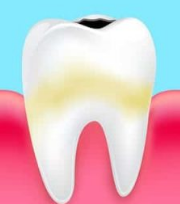Stages of tooth decay - Preventive measures to prevent tooth decay
Caries is the most common dental disease in the world. Left untreated, it can have dire consequences for dental health and even overall health. Tooth decay begins when enamel begins to break down, resulting in the appearance of caries cavities on the surface of the teeth.
Caries are caused by acid damage to the structure of the teeth due to the bacteria that live in plaque. (which is the sticky layer made of protein in saliva that metabolizes sugary foods left in the mouth). Thus, tooth decay begins in stages.
Factors that cause tooth decay
Four main factors can cause the stages of tooth decay, including:
Dental plaque:
It is a bleaching substance consisting of saliva, food deposits, and bacteria, which forms on the surface of the teeth after eating and erodes the enamel.
Poor oral hygiene:
Irregular or incorrect brushing is the main route of any bacterial reproduction, which increases the risk of decay.
Heredity:
Caries may be due to family genetic factors.
An unbalanced diet:
Eating sugars and snacks promotes cavities growth. You should also limit your consumption of fruit juice, juices, and other soft drinks. In addition to being sweet, they increase the acidity of the oral environment, leading to cavities.
Stages of tooth decay formation
Stage 1 white spots:
The first stage of tooth decay begins when chalky white areas appear on the tooth's surface due to calcium loss and plaque buildup. Then the bacteria in the plaque begin to metabolize the sugars in the consumed food.
The accumulation of these acids degrades tooth enamel, a process called demineralization of the tooth surface. At this stage, tooth decay may be stopped, through appropriate treatment, which must be discussed with the dentist, such as using a technique of brushing teeth or toothpaste and applying topical fluoride treatment.
Stage 2 of enamel caries:
In the second stage of tooth decay, the enamel begins to break down below the tooth's surface, and the natural remineralization process is unable to properly restore enamel and minerals, causing bacteria to form within the tooth.
As the decay continues, the tooth surface may crack, and if the tooth is broken, it is imperative to consult a dentist immediately.
Stage 3 dentin caries:
If this stage is left untreated, bacteria and acids continue to dissolve the enamel. The lesion can reach the dentin (dentin is the part of the tooth that lies between the enamel and the pulp). Once the caries has moved into the dentin, the level of pain begins to intensify. Severe pain may develop in the affected tooth.
When a sufficient portion of the subsurface enamel is weakened, due to loss of calcium and phosphate minerals, the enamel collapses, and dental caries form. At this point, you have to visit your dentist to repair the tooth.
Stage 4 pulp involvement:
The pulp is the center of the tooth, and it is made up of living tissue and cells called odontoblasts. The pulp cells produce dentin, which acts as a supportive tissue between the enamel and the pulp.
Thus, if the pulp of the tooth becomes infected with bacteria, pus forms and the death of blood vessels and nerves in the tooth. This is commonly referred to as a toothache that can cause persistent pain. At this point, the most common treatment is root canal treatment.
Stage 5 abscess formation:
An abscess, which is the last stage of tooth decay, forms a lot of pain, and once the infection reaches the end of the tooth root, the bone that touches it is also at risk of infection.
The gums and tongue are often swollen, which can affect speech and put the patient at risk of other diseases. At this point, other dental surgeries may be required.
Stage 6 tooth loss:
If the tooth is left to reach the last stage of tooth decay, without treatment, the tooth will be lost and must be extracted.
How to treat caries?
Caries is the progressive destruction of teeth, which results from an acid attack on the enamel by bacteria. When not treated, it gradually spreads and can attack all surrounding tissues, such as ligaments, bones, and gums.
Some forms of tooth decay can be treated by maintaining good oral hygiene habits and regular dental visits.
Dental caries when pregnant
Hormonal changes and eating habits in pregnant women can enhance tooth decay, so the mother is advised to consult her dentist at the beginning of pregnancy and to maintain oral hygiene.
There is no need to fear if tooth decay appears during pregnancy, as during this period dental care is prohibited, and it is limited to minor emergencies.
Preventive measures to prevent tooth decay:
- Adhere to the rules of oral hygiene. This is the best possible preventive measure to prevent cavities.
- Use toothpastes and mouthwashes that contain fluoride.
- Choose a good quality brush or electric toothbrush. Or use a soft toothbrush so as not to irritate your gums
- Avoid foods high in sugar as well as snacks.
- Drink water, as by moisturizing the mouth, saliva is produced that continues to nourish tooth enamel and clean the mouth.
Read: Why should you use toothpaste without fluoride?
It is essential to schedule an appointment with your dentist for regular check-ups to prevent the stages of tooth decay and to ensure oral health.
When the decay is not very advanced, the goal of treatment is to preserve the pulp and keep the tooth alive. After the decay is carefully removed.





You have posted such a good post. I am very impressed by your work towards your post for sharing such useful information. Thank you.Tooth Extraction Blacktown
ReplyDeleteThis post is really awesome. Genuinely i like this blog. It gives me more useful information. I hope you share lots of things with us .
ReplyDeleteDental care in charlotte NC